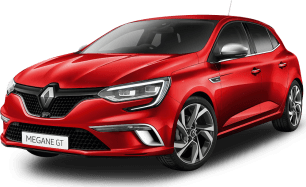Let’s rip the Band-Aid off and get to the bottom of a more than 30 per cent base price increase before we go any further.
Yep, you read that correctly. Previously, a Trendline 70TSI manual gained you Polo club membership for $19,290, before on-road costs. Now, the entry-grade Polo Life, with exactly the same powertrain underneath it, will set you back $25,250.
So, what gives? Instead of getting down and dirty with the likes of the Kia Rio, Mazda2, and Suzuki Baleno, maybe even the poshest MG3, the Polo’s aiming up at its Audi A1 cousin and the Toyota Yaris, the latter undergoing a similar upscaling evolution in 2021.
The answer is standard equipment, and more of it. Volkswagen believes the days of a ‘price leader’ Polo are behind it. That is, pique a buyer’s interest with a keenly priced but relatively sparse base model, and they inevitably move up to a higher grade once engaged in the process.
No, the new Polo cuts right to the chase, specified more in line with the cars ultimately ending up in consumers driveways.
As mentioned, the Polo range now kicks off with the 1.0-litre, three-cylinder turbo-petrol Life in manual for $25,250, and auto at $28,250, before on-road costs.
The gap between five-speed manual and seven-speed auto versions is slightly larger this time around ($3000 vs $2500) because the auto now boasts a more powerful (85kW/200Nm) version of the turbo triple than the manual (70kW/175Nm).
On top of the active and passive safety tech detailed in the Safety section (and it’s a pretty big story), the Life picks up new standard features including, LED headlights and tail-lights, 15-inch alloy wheels, the ‘Digital Cockpit’ configurable digital instrument display, front and rear parking sensors, ‘Manoeuvre Braking’ (low-speed rear AEB), wireless phone charging, electrically-folding exterior mirrors, auto headlights, rain-sensing wipers, and an auto-dimming rearview mirror. That’s the $5960 difference between prior and current Polo entry models in a nutshell.
As well, the Life boasts leather trim on the steering wheel, gearshift and handbrake lever, an 8.0-inch media touchscreen, six-speaker audio, rain-sensing wipers, LED tail-lights and DRLs, and more.
Opt for the auto-only Style ($31,250) and you’ll pick up front fog lights (with static cornering function), ‘Matrix’ LED headlights, ‘Premium’ LED tail-lights (with dynamic indicators), ‘Dynamic Light Assist’ (auto low to main beam switch with light profile adjusted to avoid dazzling cars ahead or oncoming), 16-inch alloys, dual-zone climate-control air con, front and rear carpet mats, ‘Digital Cockpit Pro’ (incorporating nav and phone functions), ambient interior lighting, and sports front seats.
A sharp package in the Polo’s brave new world of $25-$35K small car competition.
Two option packs are available, starting with the ‘Vision & Tech Package’ for the Life (auto only - $1700), incorporating ‘Discover’ nav in the 8.0-inch media set-up, Digital Cockpit Pro, voice control, wireless app connect, ‘Travel Assist’ (Level 2 semi-autonomous driving) and adaptive cruise control.
A ‘Sound & Tech Package’ is available for the Style ($1900) delivering ‘Discover’ nav in the 8.0-inch media set-up, voice control, wireless app connect, keyless entry and start, and a Beats branded premium audio system (digital eight-channel amp, 300 watts).
A Panoramic glass sunroof ($1500) is available for the Style, and metallic paint adds $600 for both models.




















































